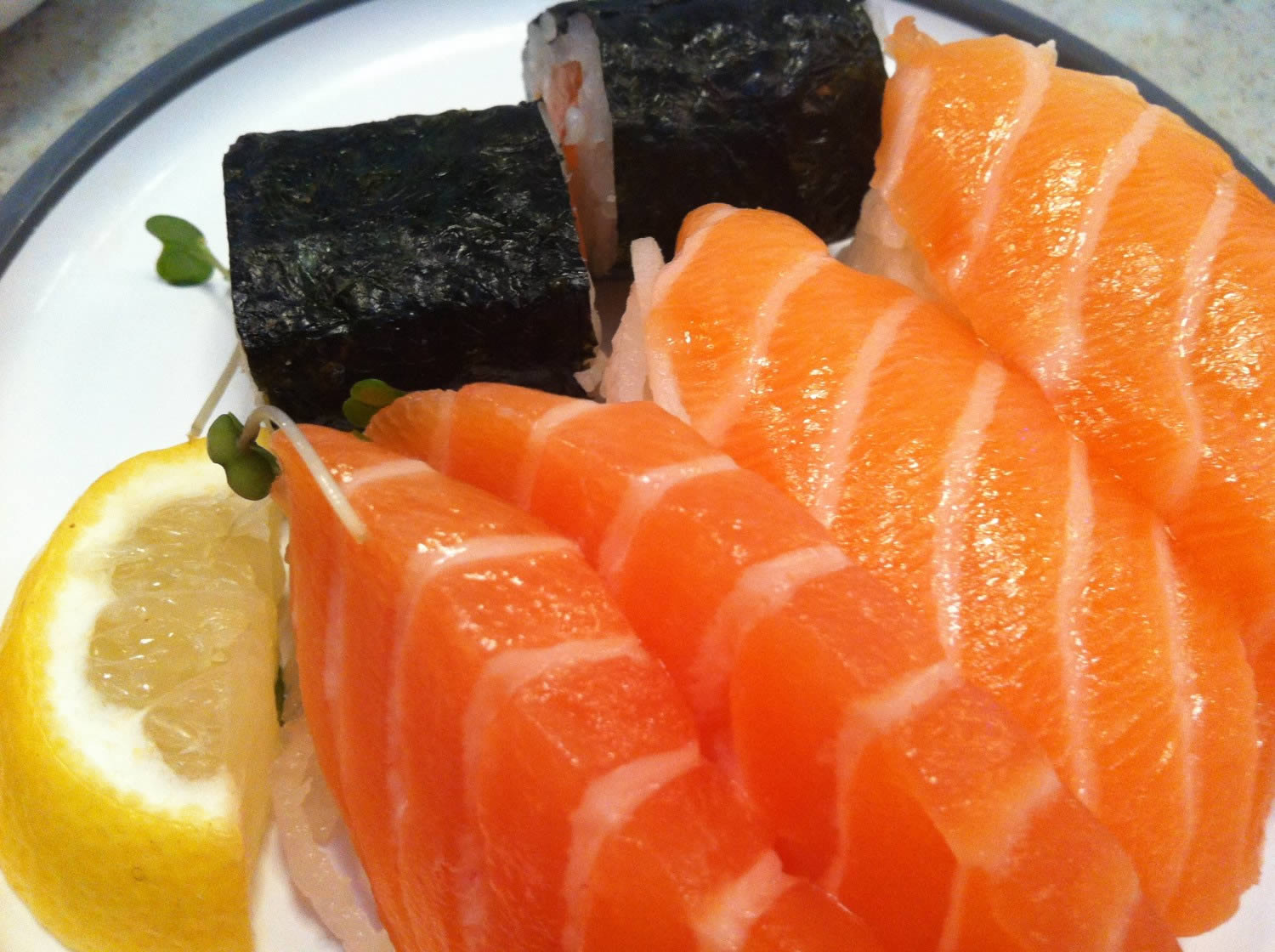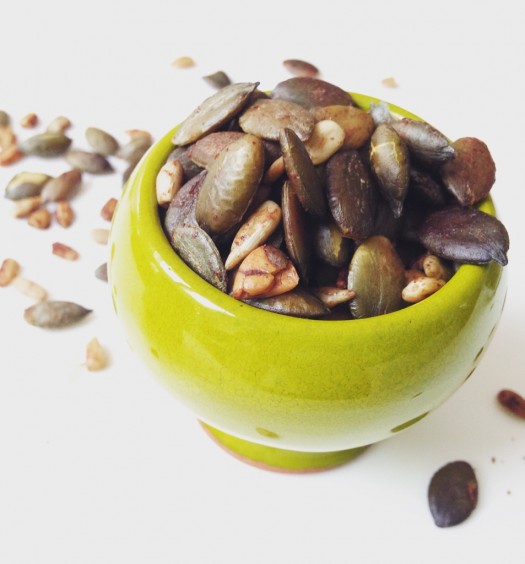How to make your sushi meal really healthy
I recommend sushi to lots of clients, as a relatively healthy (albeit expensive) gluten-free lunch alternative. So I was a little perturbed recently to read a newspaper article attacking sushi and picking holes in one of my favourite lunches. But is sushi healthy after all?
Sushi is the first meal both my children ever ate at a restaurant – both were under a year old at the time. The fact that rice and fruit were available, that there was no waiting time (due to the revolving track), combined with the fact that I could escape the restaurant within a matter of minutes if a tantrum occurred, made it a winning combination for me. I avoided the raw fish for them at this age, but they both now eat it happily; these days a sushi lunch with them turns into a hugely expensive occasion as it’s easily the meal out they enjoy the most.
But our westernisation of sushi is a problem. As I looked at the variety of foods available in a sushi bar the other day, I realised that it would be pretty easy to make some dire choices rather than the healthy options I envisage my clients making.
When I tell people to eat sushi, I imagine:
- A bowl of miso soup: miso, a fermented food, is fabulous for digestive health, can help to lower cardiovascular risk, is a source of phytoestrogens (great for hormone balance) and is packed with beneficial phytonutrients including phytosterols and soy isoflavones. This fermented bean paste is available in jars (for use at home) or in ready-made dried soup format
- Small maki rolls – containing cucumber, avocado or raw fish, wrapped with nori seaweed and topped with a few sesame seeds: it’s the nori seaweed that’s key, having a diverse phytonutrient and mineral content, including calcium, magnesium, iron and iodine.
- A couple of pieces (max) of nigiri sushi – rice fingers topped with Omega 3-rich salmon or tuna. The glutinous rice is sugary, but topping it with fish boosts Essential Omega 3 fats. Admittedly each nigiri only provides around 5g of fish (and we’re recommended a couple of 140g portions a week) but given that under a third of us actually eat our recommended oily fish quota a week, any way to get a little more into the diet sounds good to me. There has been concern over the mercury and PCB content of tuna, so stick to salmon, mackerel or just a few bits of tuna.
- A plate – at least – of sashimi (raw fish) – for the Omega 3 content. Here’s where you can really bump up your intake, and you’re avoiding the sugary rice at the same time.
- A bowl of edamame (aka green, boiled soy beans); these are great for fibre, protein, vitamins and minerals and are an easy way to up your intake of the beneficial soy isoflavones
- A seaweed salad on the side scattered with Omega-6 rich sesame seeds
- Wasabi and Pickled Ginger – wasabi (avoid artificially coloured versions) is similar to horseradish and great for clearing the sinuses and traditionally used for its antimicrobial activity. Pickled ginger contains healthful gingerols, and if it’s made in the traditional way, is a fermented food and excellent for digestive health.
- Fruit as dessert – for antioxidants
- Green tea for its antioxidants (EGCGs)
What I’m not visualising is:
- Deep fried foods such as tempura; deep frying increases unhealthy trans fat intake
- Artificially coloured (e.g. green or orange) California rolls containing mayonnaise
- Excessive portions of the carb-rich, sweetened, nutrient-deficient sushi rice – eating for instance 10 nigiri and not much else, is not a good plan as your blood sugar levels will rocket. Many supermarkets now stock brown rice sushi, which is a much better option, as it at least contains some fibre and nutrients – or try making it at home.
- Sushi topped with imitation fish (e.g dyed-red crab sticks)
- Sweet dipping sauces and excessive soy sauce; a little to flavour is fine, but soy sauce is a high-sodium food and also contains wheat. If you’re gluten-free, lay off the soy or ask for a gluten-free alternative such as Tamari soy sauce.
- Little chocolate glutinous desserts
- Cola to accompany the meal
- Substitute for drug flomax
- Buy propecia online
- Where to buy ventolin 4mg in Nashville online
- Cheap viagra online
- Generic micardis 80mg from Saint John
- Levitra price
- Belgium geodon
- Generic provigil from Montreal
- Where to buy trazodone online in Albany
- Buy flagyl online
Note that restaurant or supermarket sushi (and smoked salmon and cooked – not raw, shellfish) when pregnant is fine. Food safety standards in the UK require that sushi fish is deep-frozen, which kills any potential parasites.
I stand by my sushi recommendations to clients, but am just a little clearer on exactly what I mean by ‘sushi’; sushi can be healthy, but eating western sushi also means its very easy to end up with a high sugar and salt, low fibre meal if you’re not careful.
We hope you enjoy this blog post, let us know your thoughts in the comments below or on social media – we’re on Twitter, Facebook, Instagram and Pinterest. And don’t forget to sign up to our newsletter to receive a monthly update of our recipes, nutrition tips and expert advice.





